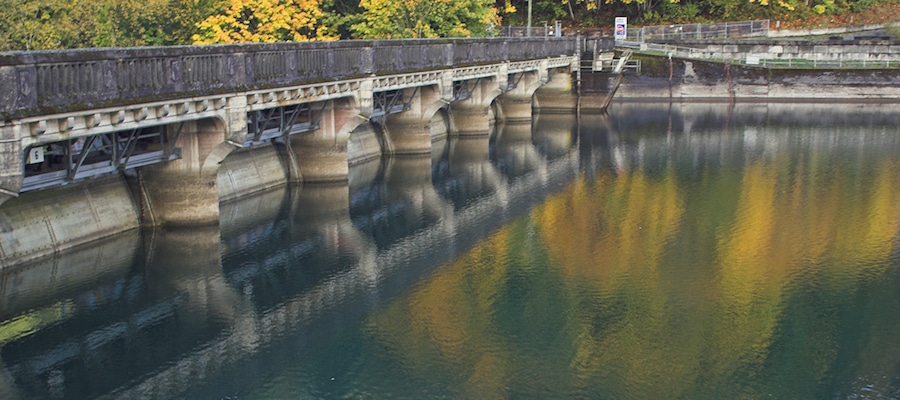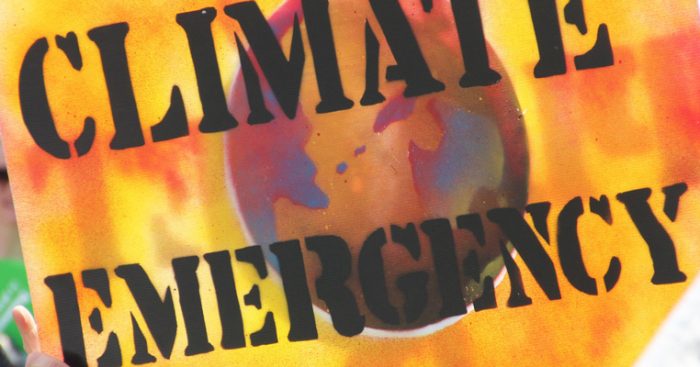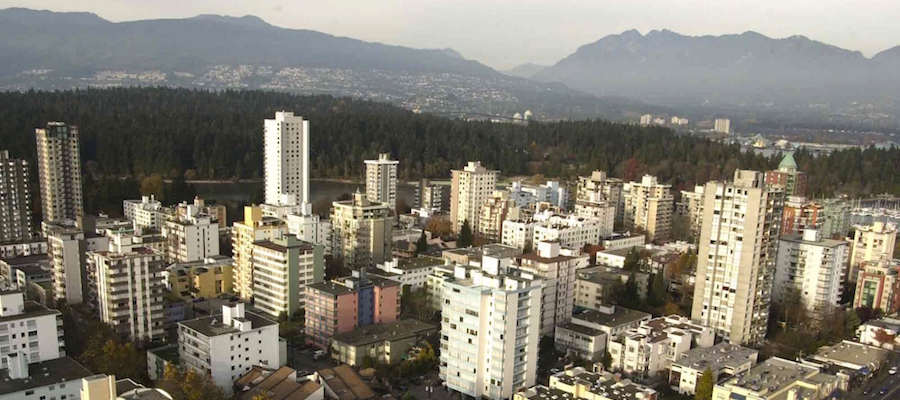Climate change and energy issues in the 2017 BC election platforms

From the fracking fields and Site C dam in BC’s northeast to an LNG terminal and Kinder Morgan’s pipeline and tanker expansion in the southwest, energy issues should figure prominently in BC’s 2017 election campaign. Climate change, the result of all that pollution from dirty energy development here and elsewhere, is an overarching challenge. In the wake of the 2015 Paris Agreement on climate change there is a new global imperative to tackle our carbon emissions.
So how are BC’s political parties responding? In this post, we’ll tour the political landscape of energy and climate, and provide a primer on the positions put forward by the Liberals, New Democrats and Greens.
The Liberals’ election platform offers no new climate/energy proposals, so we can consider their platform to be the BC government’s August 2016 updated climate plan. The so-called “Climate Leadership Plan” is a misnomer: it’s a glossy, photo-filled document that pats the government on the back for a job well done, accompanied by little that could actually be called “leadership.”
In any practical sense, the Liberals are still coasting on climate policies from a decade ago when Gordon Campbell was premier. The centrepiece of the new plan is tree planting in BC’s Interior, a dubious approach that accounts for half of the plan’s emission reductions (see this post for details on this misleading claim). Nonetheless, the Liberals used the resources of government to launch a pre-election advertising campaign promoting its climate actions, seemingly aimed at confusing low-information voters.
The NDP and Greens have each tabled their own climate action platforms. With climate scientist Andrew Weaver as leader, it’s not surprising the Green Party has the most hawkish platform. The NDP platform focuses on five key principles for action, with some focus on the carbon tax, but is overall short on details.
Note: the NDP plan is a long way from what has been proposed by the non-partisan Leap Manifesto. Efforts by a Liberal-leaning front group have tried to conflate the NDP’s climate position with the Leap Manifesto in an attempt to make the party seem much more radical than it is.
Targets are not enough
Back in 2007, the Campbell Liberals passed the Greenhouse Gas Reduction Targets Act, which committed the province to a one-third reduction in emissions below 2007 levels by 2020, and 80% below by 2050. Legislating these targets, it was argued, showed that the government was serious about its promises.
The Climate Leadership Team recommended a new GHG target of 40% below 2007 levels by 2030. But how a new BC government would meet this new aggressive target needs some unpacking.
When the BC government published its Climate Action Plan in 2008, it claimed that measures in the plan would take the province 73% of the way toward the 2020 target. Unfortunately, no further updates to the plan were made until the 2016 update under Christy Clark.
After years of dawdling, the 2020 target is no longer achievable, according to Clark’s advisory Climate Leadership Team (CLT), which reported in Fall 2015. The CLT instead recommended a new GHG target of 40% below 2007 levels by 2030.
Both the NDP and Greens accept the newly proposed 2030 target, and would amend BC’s legislation to that end. The Liberals have rejected the target, and if anything have been promoting fossil fuel development that would increase BC’s emissions (LNG, expanded gas fracking, and the Kinder-Morgan pipeline), and also make it impossible to meet the longer-term 2050 target.
Setting targets, of course, is the easy part, and Canadian politicians have a long track record of making promises and not living up to them. For years, the BC government has essentially been a climate outlaw by failing to make policy decisions consistent with its own greenhouse gas (GHG) law.
How a new BC government would meet this new aggressive target, a mere 13 years away, needs some unpacking. The CLT’s report provides some guidance, and their recommendations inform both the Green and NDP plans. The NDP would meet with the CLT to determine measures needed to meet the 2030 target, although its platform does not adopt the core CLT recommendation on $10/year annual increases to the BC carbon tax. The Greens similarly support the CLT, but large parts of their platform only state “examples of initiatives” that might be implemented. None of the three parties tables a budget for how they would finance their proposals.
Carbon tax
For many in BC the carbon tax is synonymous with climate action, and BC has received substantial good press for implementing the carbon tax back in 2008. The reality is that the carbon tax is still very small in magnitude, and has been stalled at $30 per tonne (6.7 cents per litre at the pump) since July 2012 after starting out at $10 per tonne in mid-2008.
The federal government is set to implement a national carbon price floor in 2018, as part of the 2016 federal-provincial-territorial Pan-Canadian Framework on Clean Growth and Climate Change (overview here). The carbon price floor will start at $10/tonne in 2018 and escalate annually to $50/tonne by 2022. This has no bearing in BC until 2021, when the BC carbon tax would increase to $40 per tonne, then $50 in 2022. That said, Premier Clark insisted on language in the Pan-Canadian Framework that BC would have the right to reject further carbon tax increases after a review in 2020.
The Liberals have staked out a position that all carbon tax increases must be revenue neutral; that is, returned to British Columbians via personal and corporate tax cuts and credits. About two-thirds of current carbon tax revenues go to corporate tax cuts, the remainder to personal tax cuts and a low-income credit. My research has shown that an inadequate credit makes the whole carbon tax and revenue-recycling regime regressive (meaning there’s a bigger hit as a share of income for low-income households).
The NDP platform would match the $50 floor in 2022, but proposes a faster implementation of carbon tax increases than the national minimum: to $36 in 2020 and $43 in 2021. They would allocate all of the 2020 incremental carbon tax revenues to a broad-based credit for the bottom 80% of BC households. This rejection of revenue neutrality has the potential to fix the existing carbon tax regime’s regressive impact on low-income households, although not all of the details around the credit are clear. In 2021 and later years, the NDP would allocate some of the additional carbon tax revenues to investments in public transit, energy efficiency and clean technology.
The Green Party would increase the carbon tax more rapidly, with $10 per tonne annual increases starting in 2018 and for the subsequent three years, hitting $70 per tonne in 2021. This is consistent with the CLT recommendation on carbon tax increases. Revenues from carbon tax increases would be reinvested to support the transition to a low-carbon economy. The Greens do not specify any changes to the low-income credit so it would not fix the regressive nature of the carbon tax.
In addition, the Greens would expand the scope of the carbon tax, at a lower rate ($10 per tonne rising to $50 by 2021), for vented and fugitive methane emissions in the oil and gas sector. Similarly, that “fugitive rate” of carbon tax will also apply to slash burning in forest operations starting in 2020.
A neglected aspect of carbon pricing is the $25 per tonne carbon offset fee paid by the public sector (in addition to the carbon tax) in the name of “carbon neutral government” (see this post for a critique). The Greens flag this in their platform and would also allow public sector organizations to invest in energy efficiency and alternatives rather than be forced to pay $25 per tonne for offsets.
Transportation and buildings
Two key areas for emissions reductions beyond the carbon tax are transportation (33% of BC’s emissions) and buildings (12%). In both areas a future of zero emissions is plausible, and while all parties support this objective in general, the Greens and NDP would move more quickly than the Liberals.
In transportation, the Liberals do not commit to targets for zero-emission vehicles. Instead, they have a subsidy program towards the purchase of zero-emission vehicles, a limited measure that primarily benefits affluent consumers (and “free riders” who would have made the purchase anyway).
In the areas of transportation and buildings, a future of zero emissions is plausible. While all parties support this objective in general, the Greens and NDP would move more quickly than the Liberals.
The main policy of the Liberals is to improve BC’s low carbon fuel standard. Introduced in 2010, the standard mandated that 5% of fuel content had to be renewable (a biofuel like ethanol), plus a target of 10% reduction in the carbon intensity of their fuel by 2020 (relative to 2010). The Liberals would expand the target to 15% carbon intensity by 2030, although this falls short of the 20% target recommended by the CLT.
The NDP would establish a 30% by 2030 GHG reduction target for the transportation sector. This is consistent with the CLT recommendation, although it does not comment on the CLT’s recommendations to set targets for zero-emission vehicles and increase the low carbon fuel standard. The Greens lean more heavily on their carbon tax increases, but also cite a list of example initiatives, including a zero-emission vehicle mandate, incentives to purchase zero-emission vehicles, and distance-based auto insurance.
Public investment in new transit infrastructure and improved service is also key to reducing emissions. The NDP would increase the BC government share of new transit infrastructure projects (e.g. Broadway subway and Surrey light rail) to 40%, matching the federal contribution. The Liberals had been stuck on a maximum of 33%, but shifted to 40% just prior to the writ drop. The Greens do not state a position on this but do favour increased investment in transit.
While transit investments will help lower fossil fuel emissions over time, the Liberals have also been strong proponents of a new Massey Bridge to replace the Massey Tunnel connecting Richmond and Delta, a move that will induce more automobile dependency and likely increase GHG emissions. (Tolls and ride-sharing have also emerged as transportation-related election issues but I do not cover them in this post.)
In buildings, all parties broadly support improvements in the GHG performance of buildings, which can include low- or zero-emission mandates for new buildings, as well as energy efficiency or fuel switching retrofits for existing buildings. Beyond the generalities, each platform is plagued by a lack of specifics around how and when BC would achieve specific targets.
The NDP would accept the CLT target of 50% GHG emissions reduction by 2030 from buildings. The NDP is particularly bullish on green jobs development by supporting energy efficiency retrofits for public buildings, and residential, commercial and industrial buildings. The Greens have a similar position, whereas the Liberals do not commit to a new retrofit program (the previous LiveSmartBC program was last funded in 2010).
Fossil fuel infrastructure
Promises about climate action in Canada have often been linked with proposals to expand the infrastructure for fossil fuels. This contradiction manifests mostly in the form of pipelines to get Alberta bitumen to “tidewater” and new terminals to liquefy BC’s gas for export. The latter would require major increases in gas fracking, processing capacity and pipelines to the coast, in addition to expensive liquefaction terminals.
Depending on the eventual scale, LNG could massively increase BC’s GHG emissions and make it virtually impossible to meet legislated targets. However, only one, fairly small terminal near Squamish (Woodfibre LNG) has been given the green light by investors. Global market conditions have largely undermined the economic case for LNG.
BC’s current super-low natural gas royalties are not discussed at all in any of the three platforms.
The Liberals remain committed to LNG, although not as loudly as in the 2013 election campaign, which was riddled with bogus claims about the benefits BC would receive. The NDP has also largely supported LNG development, including the Woodfibre LNG plant. However, it has opposed Petronas’ Pacific NorthWest LNG project near Prince Rupert, due to the project’s impact on salmon habitat and impact on BC’s GHG emissions.
The Green platform does not specifically rule out LNG, but public statements by Weaver are clearly in opposition. The Greens would repeal legislation locking in the tax and regulatory regime for Pacific NorthWest LNG (which is still awaiting a final investment decision), and Weaver has also criticized the subsidized BC Hydro electricity that would be received by Woodfibre LNG.
The BC and federal governments have aligned for a common target of a 45% decrease in fugitive methane emissions by 2025. However, the BC government is not currently monitoring existing methane leaks, so this seems like an empty pledge. Whoever wins the election needs to develop a strategy for monitoring and enforcement if this target is to be met.
BC’s current super-low natural gas royalties are not discussed at all in any of the three platforms.
On bitumen pipelines, after a long delay (and supposed meeting of their five conditions for approval) the Liberals have come out in support of Kinder Morgan’s TransMountain pipeline expansion. The NDP and Greens both unequivocally reject this pipeline and tanker mega-project.
Site C
The controversial Site C dam is an interesting counterpoint to these projects. It would produce largely clean electricity once completed, although at some carbon cost during construction. Larger issues include the impact on First Nations rights and title, and the loss of valuable farmland.
The Liberals have done all in their power to get the dam past its “point of no return.” This in spite of a high-level review panel chaired by former federal deputy minister Harry Swain, who flagged it as unnecessary and as having “awful economics.” If completed BC Hydro will most likely sell the power Site C produces at a loss, either through export markets or as cheap power for the mining and oil and gas industries.
The NDP’s climate plan does not mention Site C, although leader John Horgan has stated that his party would send Site C for review at the BC Utilities Commission (the Liberals rejected this approach recommended by the federal review panel). The NDP also tabled an alternative-to-Site-C policy in November 2015 under the banner Power BC. This initiative would make substantial investments to retrofit homes, businesses and public buildings for energy efficiency, add additional capacity to BC Hydro’s existing dams, and allow BC Hydro to invest in other renewable energy.
The Greens would kill Site C. Further, they would give BC Hydro a mandate to support clean energy development by using its huge reservoirs to store power for future use, basically acting as the batteries for new renewable power generation (because the sun is not always shining, the wind not always blowing).
***
In summary, there are some real distinctions across the Liberal, NDP and Green platforms on climate and energy policy, but it can be challenging to cut through the rhetoric and get down to the specifics. Hopefully, the campaign will spawn more debate about how BC can create jobs, increase efficiency and meet its climate targets.
Topics: Climate change & energy policy, Election commentary, Environment, resources & sustainability, Fracking & LNG, Taxes



